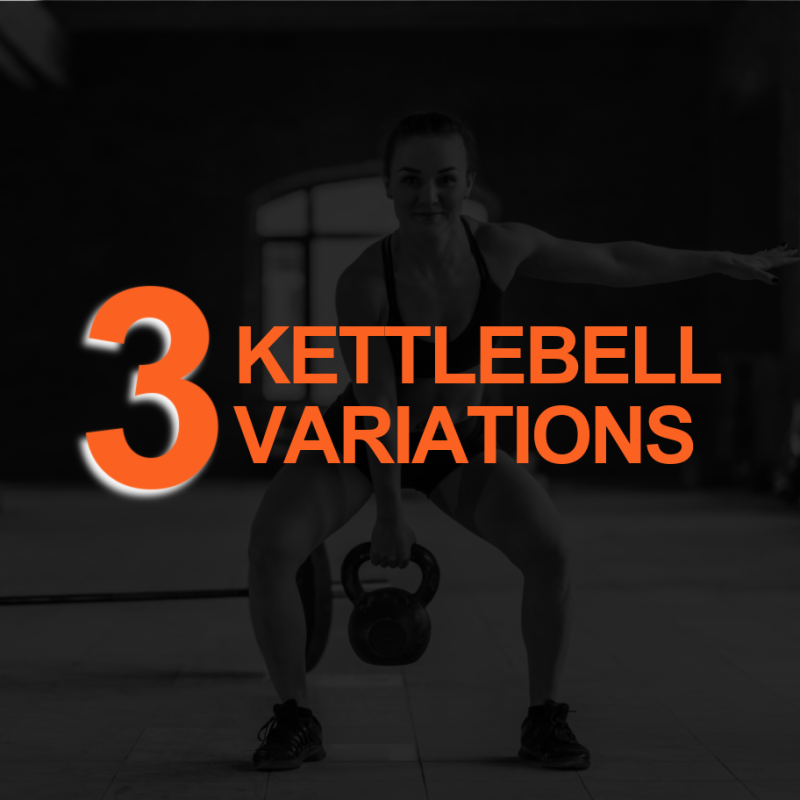
When it comes to kettlebell training the most popular exercise has got to be the 2 handed kettlebell swing. There are plenty of different variations in technique for the two-handed swing. However, once your clients master this movement, what other kettlebell variations should you introduce?
Why Include Kettlebell Variations?
One of the advantages of kettlebell swings is that it isn’t a super difficult movement to master and people can often progress through the weights very quickly. With some coaching, you get clients who initially complain about how heavy an 8kg kettlebell is to comfortably swinging a 16kg kettlebell within 10 minutes.
This presents its own challenges. How do you progress this movement for clients? Basically, you either increase the volume (more sets or repetitions), increase the volume (more sets/reps in less time), or simply increase the weight. This is easy enough to do when you’re based in a well-equipped facility or working 1-1 with clients, but becomes more challenging when working with groups or with fewer weight options. That’s where some simple swing variations can come in handy. Below are my three favorite variations.
Single-Arm Swing
Let’s start with this one because it is the easiest option, but this doesn’t mean it’s less effective. The single-arm swing is a great variation because you’ve essentially just made the same weight heavier by only holding it in one hand. Not only does it become heavier, it also challenges your body in a different plane of motion because it is now a unilateral exercise and your body is working on anti-rotation throughout the movement engaging your core and stabilizers more than a two-handed swing.
The extra bonus to this is you’ll never need to increase volume or density by incorporating this variation because now you’ll have to complete repetitions with the left and right hands. Spice things up even further by completing a hand-to-hand swing, changing hands at the top of each repetition.
Technically, nothing changes for this movement, it still revolves around a strong hip hinge pattern and the kettlebell still passes between the legs. Some people will also create some rotation in their torsos at the bottom of the hinge. This is a personal preference as to whether you try to stay square on, or embrace the rotation caused by the unilateral nature of the exercise.
Skier Swing
The skier swing is another unilateral variation. Technically, it is still very similar to a standard single-arm swing, but instead of the kettlebell passing between the legs, you will stand with your legs closer together and it will pass on the outside of the thighs. It’s important with this movement that you build confidence with the path of the kettlebell to ensure you don’t collect your own knee with a heavy metal cannonball.
The other benefit of using the skier swing is that for some larger folk swinging the kettlebell between the legs can be problematic. Swinging the kettlebell on the outside of your legs can eliminate that issue.
Pendulum Swing
The pendulum swing is probably my favorite of the variations, maybe because it is the most different technically. This variation doesn’t revolve around a hip hinge like the other options and the kettlebell doesn’t pass in a standard sagittal plane. Instead, it works on a frontal plane with the kettlebell passing in front of the body from left to right (or vice versa).
In my opinion, this variation offers one of the best transfers to athletic performance because you need to rotate on the back foot and pop the hip to get the power into the swing variation. This transfers so well to any rotational sport, think; baseball, tennis, golf, boxing, the list goes on and on.
These are my favorite swing variations that you should try. Each of them I love, not only by virtue of variation, but because they all offer something unique from a physiological training perspective compared to a standard two-handed kettlebell swing.
About the Author
Travis Mattern is the co-founder and director at Fitness Education Online. Fitness Education Online are one of the leading organisations in the world when it comes to providing CEC courses for Personal Trainers and is an official partner of NFPT. Check out their website to see their range of Fitness Australia registered courses.






